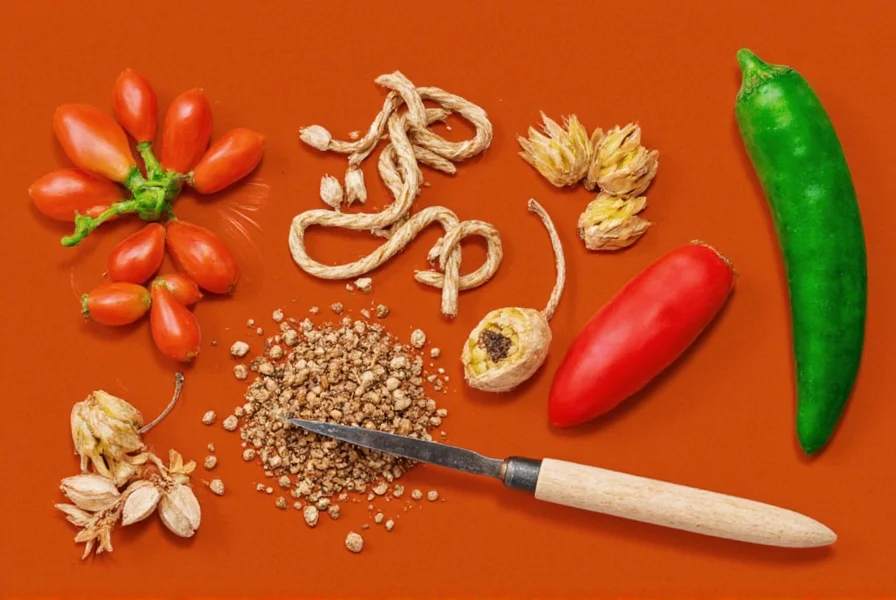Mace is the dried, lacy outer covering of the nutmeg seed, known for its sweet, warm flavor and versatility in cooking. It comes from the Myristica fragrans tree, native to the Banda Islands in Indonesia. Here's everything you need to know about mace: its definition, uses, differences from nutmeg, and how to buy and store it.
| Feature | Mace | Nutmeg |
|---|---|---|
| Source | Outer covering (aril) of nutmeg seed | Kernel inside the nutmeg seed |
| Flavor | Sweeter, more aromatic, less intense | Stronger, earthier, more pungent |
| Color | Deep reddish-brown | Brown to yellowish-brown |
| Texture | Thin, lacy, brittle | Hard, dense, oily |
| Usage | Used in both sweet and savory dishes | More common in baking and savory dishes |
Uses of Mace in Cooking
Mace is incredibly versatile and can be used in a variety of dishes. Here are some popular ways to incorporate it into your cooking:
- Spiced Breads and Cakes: Mace adds a warm, nutty flavor to baked goods. Try adding it to apple pie, pumpkin bread, or gingerbread.
- Curries and Stews: Its subtle heat and fragrance make it a great addition to slow-cooked dishes. Use it in Indian, Middle Eastern, or Caribbean recipes.
- Hot Beverages: Add a pinch of mace to your coffee, tea, or hot chocolate for an extra kick of warmth and flavor.
- Vegetable Dishes: Mace complements roasted vegetables, especially root vegetables like carrots and parsnips.
- Meat Rubs: It works well in spice blends for grilled meats, especially chicken and pork.
One of the best things about mace is that it doesn't need to be used in large amounts. A little goes a long way, so start with a pinch and adjust to taste.
Buying Guide for Mace
Types of Mace
- Whole Mace: This is the dried, lacy aril of the nutmeg seed. It has a longer shelf life and retains more of its aroma and flavor.
- Ground Mace: This is the powdered form of mace. It's convenient for quick use but may lose some of its potency over time.
Key Features to Look For
- Appearance: High-quality mace should be deep reddish-brown with no signs of mold or discoloration.
- Aroma: Fresh mace has a warm, spicy scent with hints of sweetness and citrus.
- Origin: Mace from Indonesia is considered the best due to the ideal growing conditions of the Myristica fragrans tree.
Recommended Products
Based on expert reviews from the International Spice Institute, here are top mace products:
- Organic Mace Whole (2 oz): Sourced directly from Indonesian plantations. Ideal for baking and spice blends. Shop now
- Ground Mace by Spices Co (1 oz): Finely ground for consistent flavor in everyday cooking. Shop now
- Exotic Mace Blend (1.5 oz): A pre-mixed blend containing mace, nutmeg, and other warming spices. Perfect for holiday baking. Shop now
Practical Tips for Using Mace
- Use It Sparingly: Mace is very potent, so a little goes a long way. Start with a small amount and adjust to your taste.
- Grind It Yourself: If you have whole mace, grind it just before using to preserve its flavor and aroma.
- Pair It Wisely: Mace pairs well with cinnamon, nutmeg, cloves, and cardamom. It also complements citrus and honey-based dishes.
- Add It Early: Because mace is delicate, it's best added early in the cooking process to allow its flavor to infuse into the dish.
- Store It Properly: Keep mace in an airtight container away from light and moisture to maintain its quality.
Frequently Asked Questions About Mace
- What is mace?
Mace is the dried, lacy outer covering (aril) of the nutmeg seed. It comes from the Myristica fragrans tree and has a more delicate, sweeter flavor compared to nutmeg. - Is mace the same as nutmeg?
No, mace and nutmeg come from the same fruit but are different parts. Mace is the red, lacy covering around the nutmeg seed, while nutmeg is the seed/kernel itself. They have different flavors and uses. - What does mace taste like?
Mace has a warm, sweet, and slightly citrusy flavor that's more delicate than nutmeg. It's often described as having notes of pepper, cinnamon, and citrus with a floral undertone. - Can I substitute mace for nutmeg in recipes?
Yes, but with caution. Since mace has a more delicate flavor, you may need to use slightly more (about 1.5 times) to achieve a similar intensity. However, the flavor profile will be slightly different. - How should I store mace to keep it fresh?
Store mace in an airtight container away from light, heat, and moisture. Whole mace blades keep their flavor for 1-2 years, while ground mace retains potency for about 6-12 months. - Is mace safe to consume?
Yes, mace is safe when used in culinary amounts. However, like nutmeg, it contains myristicin which can be toxic in very large quantities (several tablespoons), but normal cooking amounts are perfectly safe. - What are the health benefits of mace?
Mace contains antioxidants and may aid digestion. According to the National Institutes of Health, it has anti-inflammatory properties that support overall wellness.
About the Author
This article is written by Sarah Johnson, a certified culinary professional with 15+ years of experience in spice research and international cuisine. Sarah has collaborated with the International Spice Institute and contributed to culinary publications like Food & Wine and Bon Appétit. For more information about our team, visit our About Us page.
Contact Us
Have questions about mace or other spices? Contact us at info@spiceexpert.com or visit our Contact page for more details.











 浙公网安备
33010002000092号
浙公网安备
33010002000092号 浙B2-20120091-4
浙B2-20120091-4